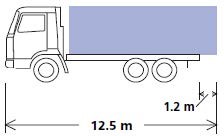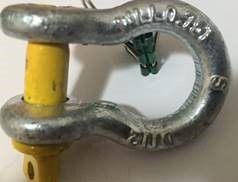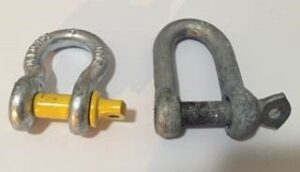Towing Boats Questions
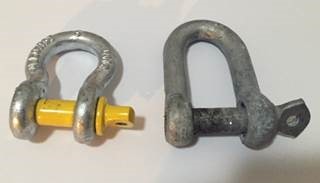
Those recurring questions around towing and loading boats –
- I am going away camping and store my gear in my boat, do I need to have my load restrained?
- Do I need to display a red flag on my boat motor prop?, and
- What about those shackles – to be rated or not to be rated?
Let’s try to answer the questions.
Q.1 Restraining loads
If you are driving a vehicle that is carrying a load, or towing a trailer that is carrying a load, you have to make sure that the load is restrained properly. Load restraint is not just about making sure that the load does not come off —it is also about making sure that the load does not shift in a way that makes the vehicle unstable or unsafe.
Under the Queensland load restraint requirements, any load carried on or in your vehicle or trailer must:
- not be placed in a way that makes your vehicle unstable or unsafe
- be secured so it won’t move in any way that makes your vehicle unstable or unsafe
- be secured so it does not fall from your vehicle while driving—including driving consisting of emergency braking or turning suddenly
- not project from your vehicle in a way that is likely to injure a person, obstruct the path of other drivers or pedestrians, or damage another vehicle or anything else
- be restrained using an appropriate load restraint method.
If you don’t restrain a load properly you might cause an accident, injury or death if:
- objects fall from your vehicle on to other traffic or pedestrians
- other drivers swerve to dodge items that are falling or have fallen from your vehicle
- loads that have spilled onto the road cause other vehicles to skid and lose control
- unsecured loads crash into your vehicle cabin during emergency braking
- loads that shifts and contributes to your car becoming unstable or unsafe.
The load restraint laws apply to all vehicles regardless of their gross vehicle mass. Driver’s consigners, loaders and receivers all have a responsibility to make sure that the load restraint requirements are met. If you don’t secure your load properly you may get a fine or, for a serious breach, be prosecuted in court.
Transporting boats
As the Load Restraint Guide (referred to below) notes, a safety chain should be used in addition to the wire rope from the trailer’s winch to the bow of the boat and the boat should have a strap over the stern, attaching it to the trailer. If the boat is fitted with an outboard motor and its mounting to the stern is not designed to withstand bumps and other shocks encountered in road transport, it may be necessary to separately restrain the motor or remove it during transport.
For more information follow these links;
http://www.tmr.qld.gov.au/Safety/Vehicle-standards-and-modifications/Loads-and-towing/Load-restraint.aspx
http://www.ntc.gov.au/Media/Reports/(E62BE286-4870-ED95-1914-1A70F3250782).pdf – Note Page 170 Restraining a Caravan.
Q2. Projecting loads
Drivers of cars, utilities and trucks that are transporting loads that project beyond the outer edge(s) of their vehicle or trailer must obey the laws governing the safe moving of these loads. These laws have been developed to protect all road users. This information explains the requirements for transporting projecting loads and should help you ensure you carry these loads safely and legally.
Loads projecting from the back of a vehicle or trailer
Clearly visible loads that project up to 1.2m from the back of your vehicle or trailer do not need a warning device. Any load that projects more than 1.2m from the back of your vehicle or trailer must display a warning device.
Warning devices – Warning devices must meet the following requirements.
During the day – You must display a brightly coloured red and yellow, or yellow flag at least 450mm by 450mm is fixed to the extreme back of the load. Note: TMR advise a red flag is acceptable.
At night – You must display a red warning light that is visible from at least 200m away, OR at least 2 red reflectors capable of reflecting from the headlights of a following vehicle.
At all times – All warning devices must be: displayed at the very end of your load; and clearly visible to other people.
Rear projection limits
Rear projection up to 1.2m does not need a warning device.
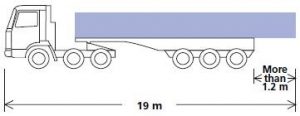
Rear projection more than 1.2m does need a warning device. This means that if the distance between the end of your trailer and prop exceeds 1.2m then a warning device (red flag) is needed.
More information is available at; http://www.tmr.qld.gov.au/Safety/Vehicle-standards-and-modifications/Loads-and-towing/Projecting-loads.aspx
Q.3 Safe Towing & Safety Chain Connections to Tow Bars – Coupling Shackles
The safe towing guide (PDF, 155 KB) ( http://www.tmr.qld.gov.au/-/media/Safety/Vehicle-standards-and-modifications/Loads-and-towing/Safe-towing/Safe_towing_guide.pdf?la=en ) provides information about how to ensure the vehicle and trailer are correctly equipped and how to drive a vehicle and trailer combination safely.
Before we start let’s understand some definitions;
Aggregate Trailer Mass (ATM) is the total mass of the laden trailer when carrying the maximum load recommended by the manufacturer. This includes any mass imposed onto the drawing vehicle when the combination vehicle is resting on a horizontal supporting plane.
Gross Trailer Mass (GTM) is the mass transmitted to the ground by the axle or axles of the trailer when coupled to a drawing vehicle and carrying its maximum load uniformly distributed over the load bearing area.
If you are in any doubt check your trailer compliance plate for the relevant ATM & or GTM.
Safety chains
Any trailer without breakaway brakes, must be fitted with safety chains that are marked in accordance with the relevant Australian Standard complying with the following:
- trailers that do not exceed 2500 kg ATM must have at least one safety chain complying with Australian Standard AS 4177.4-1994 or Australian Standard AS 4177.4-2004 ‘Caravan and light trailer towing components Part 4: Safety chains up to 3500kg capacity’, or be a safety cable with a certified load capacity of the same
- trailers over 2.5 tonnes and not exceeding 3.5 tonnes ATM must have two safety chains of designation of 3500 kg complying with Australian Standard AS 4177.4-1994 or Australian Standard AS 4177.42004
- trailers over 3500 kg ATM must have two safety chains made from steel of a minimum 800 MPa breaking stress that conforms to the mechanical properties of Grade T chain as specified in Australian Standard AS 2321-1979 ‘Short Link Chain for Lifting Purposes (uncalibrated)’ or Australian Standard AS 2321-2006 ‘Short Link Chain for Lifting Purposes.’ Each chain must be sized such that the minimum breaking load exceeds the ATM.
The length of the safety chain/s must prevent the trailer’s drawbar hitting the ground if the trailer is detached from the towing vehicle. The safety chains must be properly connected to the tow bar with attachments capable of withstanding the specified breaking load of each chain. Do not use padlocks.
Safety Chain Connections to Tow Bar – D Shackles
Safety chain(s) must be suitably and appropriately connected to a tow bar. The use of a shackle is permitted, provided the shackle used is fit for the purpose and compatible with the safety chain in terms of strength and size. It is the responsibility of the vehicle owner/operator to ensure that a shackle, if used to attach safety chain to tow bar, is fit for the purpose and compatible with the safety chain. This can be demonstrated in a couple of ways:
- Use of a shackle that is compatible with the safety chain AND complies with AS 2741-2002 “Shackles”. In this case the shackle will have appropriate markings.
- Alternatively, the use of a shackle that is compatible with the safety chain AND is of a reputable brand. In this case, the shackle will have appropriate markings to show the brand and/or part identification sufficient to trace its brand and strength.
It should be recognised that a shackle that does not have any markings makes it difficult to establish its strength or compatibility with the safety chain. It is the responsibility of the vehicle owner/operator to satisfactorily address inquiries raised during any roadside audit by an enforcement officer.
Notes:
Usually diameter of the shackle pin is larger than the shackle body.
The strength of a shackle will vary according to its grade. An “S” grade shackle will be stronger than an “M” grade shackle of the same size.
Stainless steel shackles are generally unsuitable for trailer use due to the material’s general low resistance to bending stresses.
A Bow shackle will provide flexibility for greater angular movement compared to a “D” shackle.
How do I know if I have the right shackles?
In accordance with QLD law you must be in a position to prove that the shackle used is fit for purpose and compatible with the safety chain in terms of strength and size. Using the Safe Towing Guide, refer Page 5, identify the relevant ATM for your trailer. In my case the trailer ATM is rated at 1900 kg.
| Table-1 Selection of D Shackle (Guide only) Trailer ATM (kg) | Chain size classification AS 4177.4-2004 | Chain Marking AS 4177.4-2004 | Suitable rated D shackle size AS 2741-2002 Grade “S” or“6 dee” or “6 bow” | Minimum Proof Load Strength (kN) Chain / Shackle |
| up to 1 000 | 1 000 | 4177-10 | 6mm S WLL 0.5T | 4.9 / 9.9 |
| up to 1 600 | 1 600 | 4177-16 | 6mm S WLL 0.5T | 7.9 / 9.9 |
| up to 2 500 | 2 500 | 4177-25 | 8mm S WLL 0.75T | 12.3 / 14.8 |
| up to 3 500 | 3 500 | 4177-35 | 10mm S WLL 1.0T | 17.2 / 19.7
|
Using the table, to ensure compliance with AS 2741-2002, the suitable rated D shackle size is 8mm S WLL 0.75T.
Now, having purchased a new boat in 2015, you would think that the Austraian Design Rules would ensure that the trailer was manufactured with the most suitably rated D Shackle – not so! Attached is a photo showing the D shackle which came fitted to to my boat pictured on the right, plain & with no markings identifying its suitability. The photo of the shackle on the left, with the yellow pin is the suitably rated shackle which clearly bears appropriate markings to show the brand and strength.
Rated shackles are readily available at most boating/trailer outlets or via ebay.
